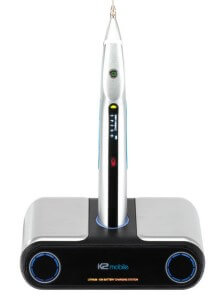Wireless Laser Is Fast, Portable, and Versatile
A versatile addition to any workflow, this portable diode laser can quickly and comfortably treat a range of soft-tissue and hygiene procedures

You’ve done your research, spoken to your colleagues, and talked with sales reps. Having done all that, you’re ready to purchase a dental laser. Now what? As with all complex purchasing decisions, it’s helpful to examine not only which dental procedures might benefit from a laser, but also the device's functionality, portability, ergonomics, power, safety, and price range.
A Practice Workhorse
Scott Josephson, DMD, Mesa, AZ, purchased the Hulaser K2 Mobile Wireless Soft Tissue Diode Laser about a year ago, and during that short time it has quickly become the practice workhorse.
“We call it our workhorse because the hygiene staff and I use it more than any other laser,” Dr. Josephson explained.
A soft-tissue diode laser with a pen-like design, the K2 is absent a power cord and foot pedal, so it moves quickly and easily between multiple operatories.
“Its ease of use and portability are key—there’s very little to move around—just bring the laser and the glasses,” Dr. Josephson shared. “Hygienists use it often for bacterial reduction procedures.”

“Its ease of use and portability are key."
—Scott Josephson, DMD
Designed with a host of features, including 22 presets and 4 user-defined memory settings for frequently used procedures, and LED lighting for high visibility, the K2 has a soft-button technique that minimizes finger fatigue. A light weight of 92 g reduces wrist and arm fatigue.
“We use it for troughing before a scan, gingival contouring, operculectomies, uncovering of teeth and implants, frenectomies, fibroma removal, aphthous ulcers, and incise/drainage,” Dr. Josephson said. “It’s gentle enough for hygiene and robust enough for soft-tissue procedures. The 980- nm wavelength means a higher water absorption with less collateral damage, charring, or depth of penetration, and a smoother ablation of tissue,” he added.
With the K2, practices can offer treatments they previously needed to refer out, such as endodontic bacterial reduction, whitening, and low-level laser therapy and bio-stimulation.
“Patients like the idea of less postoperative bleeding and no blades, and they appreciate not having to go to another office, which has had a very positive influence on my ROI,” Dr. Josephson said.
Featuring the world’s first adjustable fiber length, the K2 also has a patented front aluminum cap with an adjustable tip that can be bent to almost 90 degrees. The cap, optic fiber, and silicone sleeve can be autoclaved, eliminating costly disposable tips.
“I’ve seen very little postop discomfort and short healing times following laser surgery procedures,” Dr. Josephson said.




